Eleftherios Avramidis
Preliminary WMT24 Ranking of General MT Systems and LLMs
Jul 29, 2024



Abstract:This is the preliminary ranking of WMT24 General MT systems based on automatic metrics. The official ranking will be a human evaluation, which is superior to the automatic ranking and supersedes it. The purpose of this report is not to interpret any findings but only provide preliminary results to the participants of the General MT task that may be useful during the writing of the system submission.
Error Span Annotation: A Balanced Approach for Human Evaluation of Machine Translation
Jun 17, 2024



Abstract:High-quality Machine Translation (MT) evaluation relies heavily on human judgments. Comprehensive error classification methods, such as Multidimensional Quality Metrics (MQM), are expensive as they are time-consuming and can only be done by experts, whose availability may be limited especially for low-resource languages. On the other hand, just assigning overall scores, like Direct Assessment (DA), is simpler and faster and can be done by translators of any level, but are less reliable. In this paper, we introduce Error Span Annotation (ESA), a human evaluation protocol which combines the continuous rating of DA with the high-level error severity span marking of MQM. We validate ESA by comparing it to MQM and DA for 12 MT systems and one human reference translation (English to German) from WMT23. The results show that ESA offers faster and cheaper annotations than MQM at the same quality level, without the requirement of expensive MQM experts.
Fine-grained linguistic evaluation for state-of-the-art Machine Translation
Oct 14, 2020
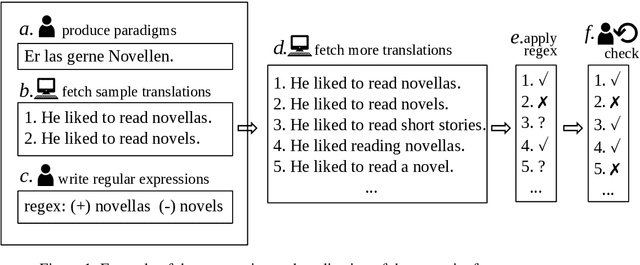
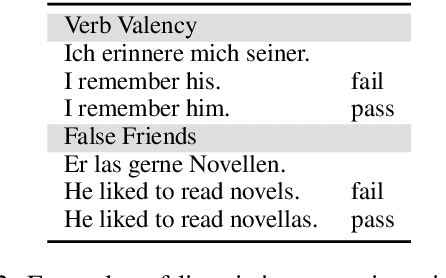
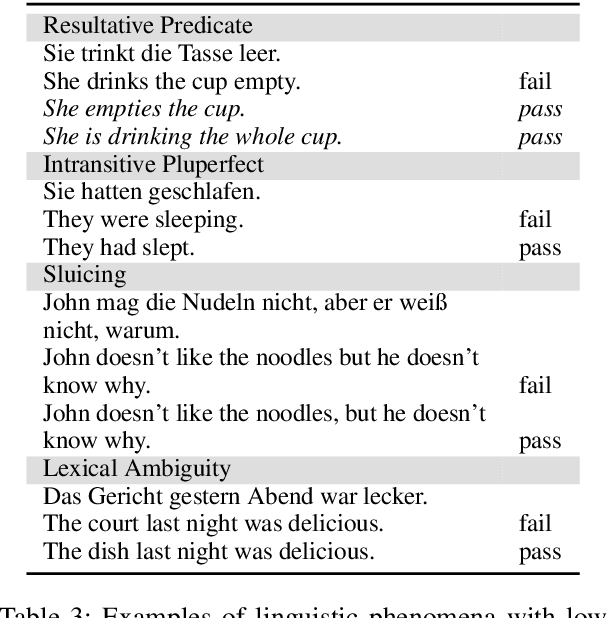
Abstract:This paper describes a test suite submission providing detailed statistics of linguistic performance for the state-of-the-art German-English systems of the Fifth Conference of Machine Translation (WMT20). The analysis covers 107 phenomena organized in 14 categories based on about 5,500 test items, including a manual annotation effort of 45 person hours. Two systems (Tohoku and Huoshan) appear to have significantly better test suite accuracy than the others, although the best system of WMT20 is not significantly better than the one from WMT19 in a macro-average. Additionally, we identify some linguistic phenomena where all systems suffer (such as idioms, resultative predicates and pluperfect), but we are also able to identify particular weaknesses for individual systems (such as quotation marks, lexical ambiguity and sluicing). Most of the systems of WMT19 which submitted new versions this year show improvements.
Fine-grained evaluation of German-English Machine Translation based on a Test Suite
Oct 16, 2019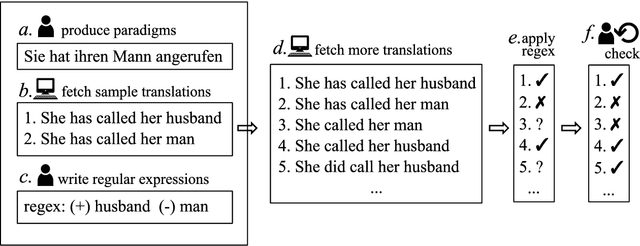
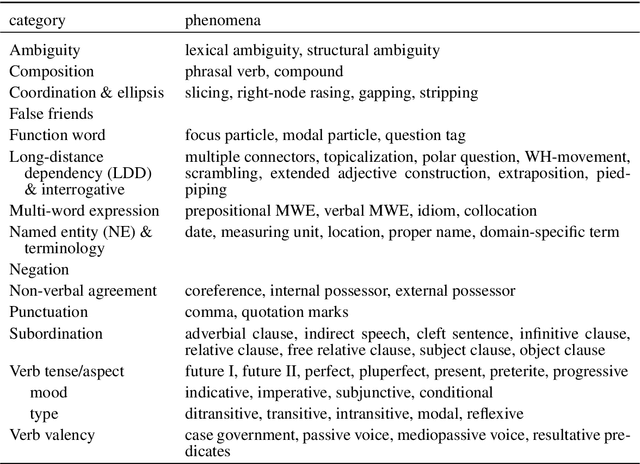
Abstract:We present an analysis of 16 state-of-the-art MT systems on German-English based on a linguistically-motivated test suite. The test suite has been devised manually by a team of language professionals in order to cover a broad variety of linguistic phenomena that MT often fails to translate properly. It contains 5,000 test sentences covering 106 linguistic phenomena in 14 categories, with an increased focus on verb tenses, aspects and moods. The MT outputs are evaluated in a semi-automatic way through regular expressions that focus only on the part of the sentence that is relevant to each phenomenon. Through our analysis, we are able to compare systems based on their performance on these categories. Additionally, we reveal strengths and weaknesses of particular systems and we identify grammatical phenomena where the overall performance of MT is relatively low.
Linguistic evaluation of German-English Machine Translation using a Test Suite
Oct 16, 2019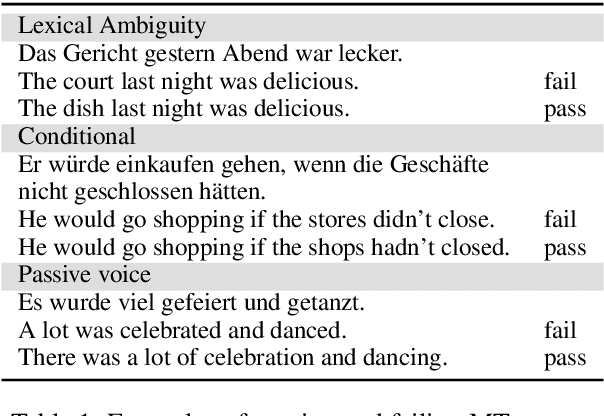

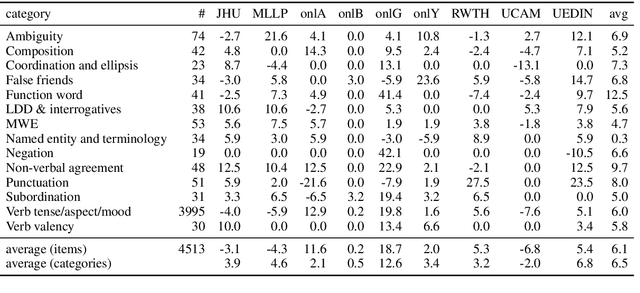
Abstract:We present the results of the application of a grammatical test suite for German$\rightarrow$English MT on the systems submitted at WMT19, with a detailed analysis for 107 phenomena organized in 14 categories. The systems still translate wrong one out of four test items in average. Low performance is indicated for idioms, modals, pseudo-clefts, multi-word expressions and verb valency. When compared to last year, there has been a improvement of function words, non-verbal agreement and punctuation. More detailed conclusions about particular systems and phenomena are also presented.
Train, Sort, Explain: Learning to Diagnose Translation Models
Mar 28, 2019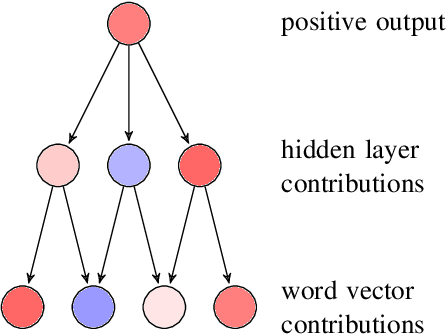
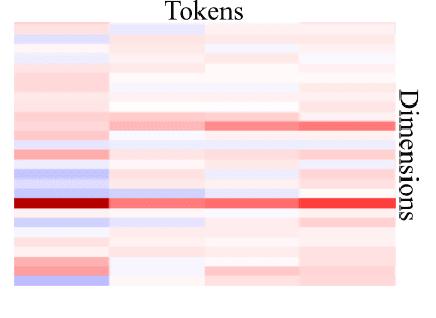
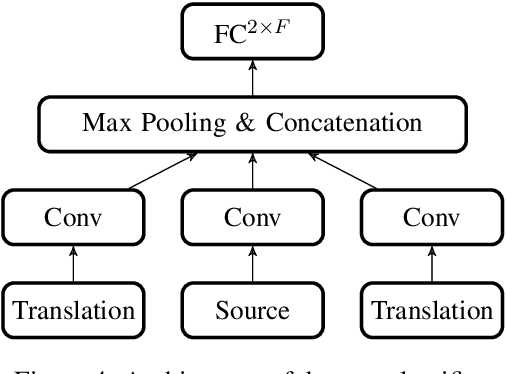
Abstract:Evaluating translation models is a trade-off between effort and detail. On the one end of the spectrum there are automatic count-based methods such as BLEU, on the other end linguistic evaluations by humans, which arguably are more informative but also require a disproportionately high effort. To narrow the spectrum, we propose a general approach on how to automatically expose systematic differences between human and machine translations to human experts. Inspired by adversarial settings, we train a neural text classifier to distinguish human from machine translations. A classifier that performs and generalizes well after training should recognize systematic differences between the two classes, which we uncover with neural explainability methods. Our proof-of-concept implementation, DiaMaT, is open source. Applied to a dataset translated by a state-of-the-art neural Transformer model, DiaMaT achieves a classification accuracy of 75% and exposes meaningful differences between humans and the Transformer, amidst the current discussion about human parity.
Sentence-level quality estimation by predicting HTER as a multi-component metric
Jul 19, 2017



Abstract:This submission investigates alternative machine learning models for predicting the HTER score on the sentence level. Instead of directly predicting the HTER score, we suggest a model that jointly predicts the amount of the 4 distinct post-editing operations, which are then used to calculate the HTER score. This also gives the possibility to correct invalid (e.g. negative) predicted values prior to the calculation of the HTER score. Without any feature exploration, a multi-layer perceptron with 4 outputs yields small but significant improvements over the baseline.
 Add to Chrome
Add to Chrome Add to Firefox
Add to Firefox Add to Edge
Add to Edge